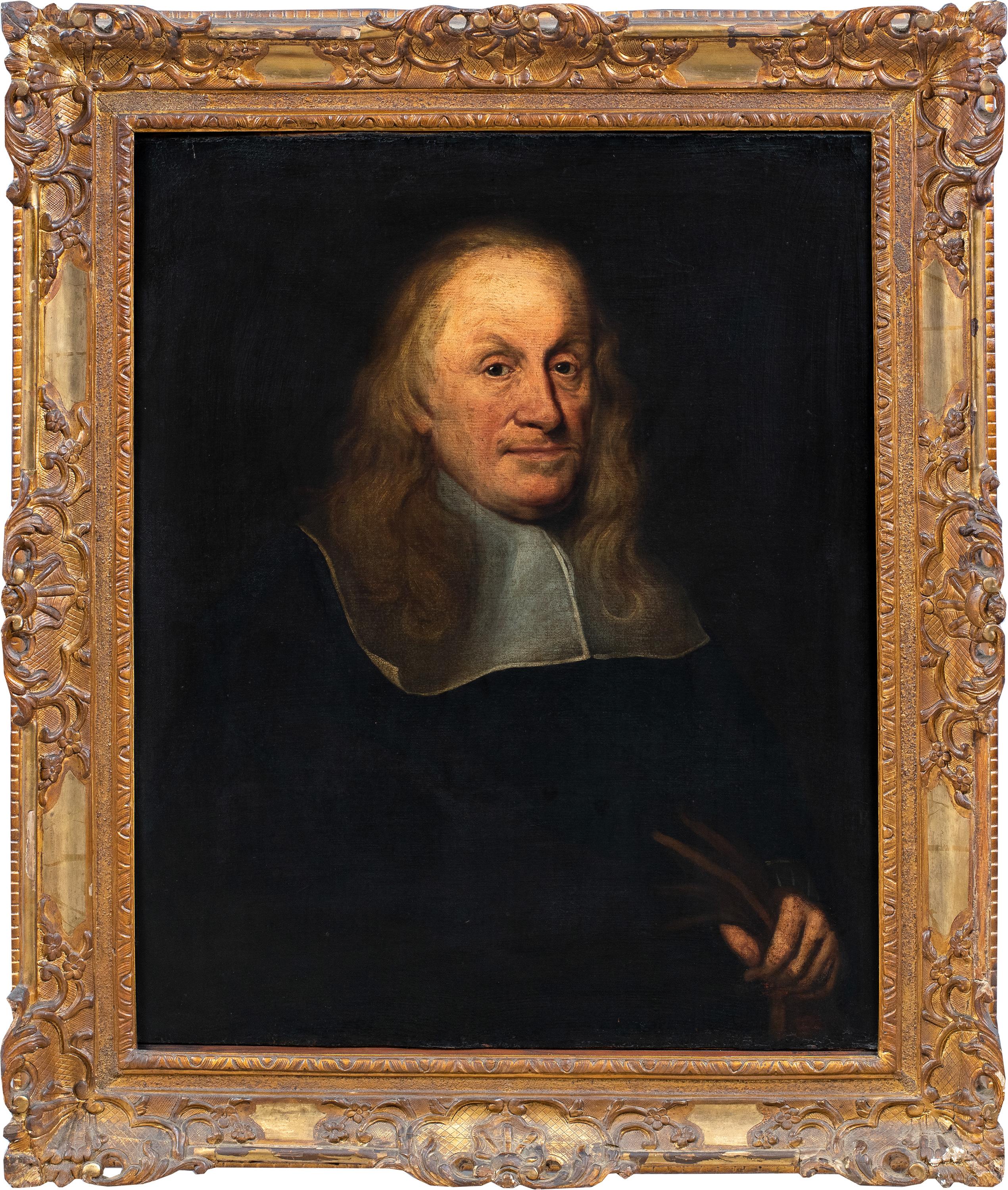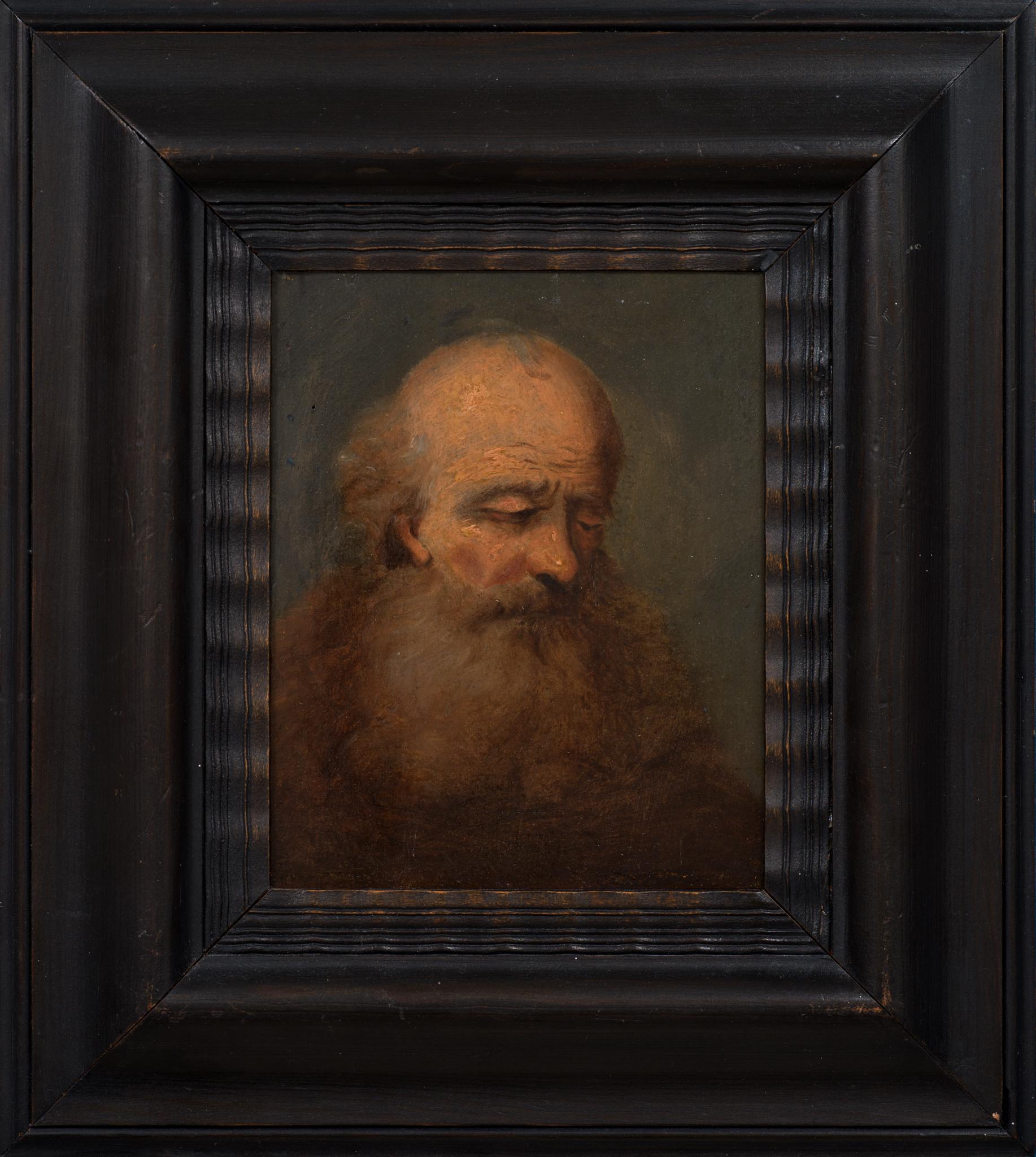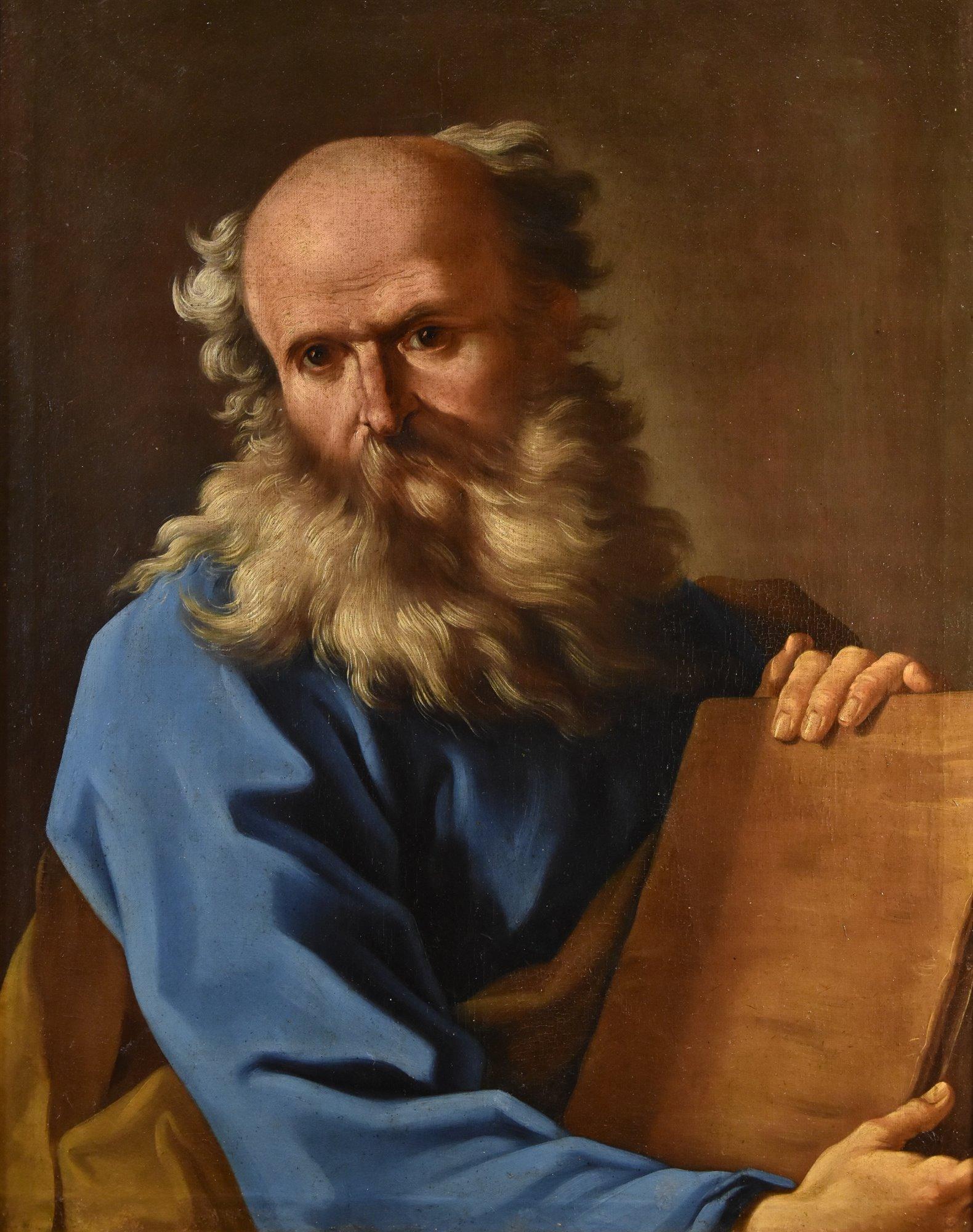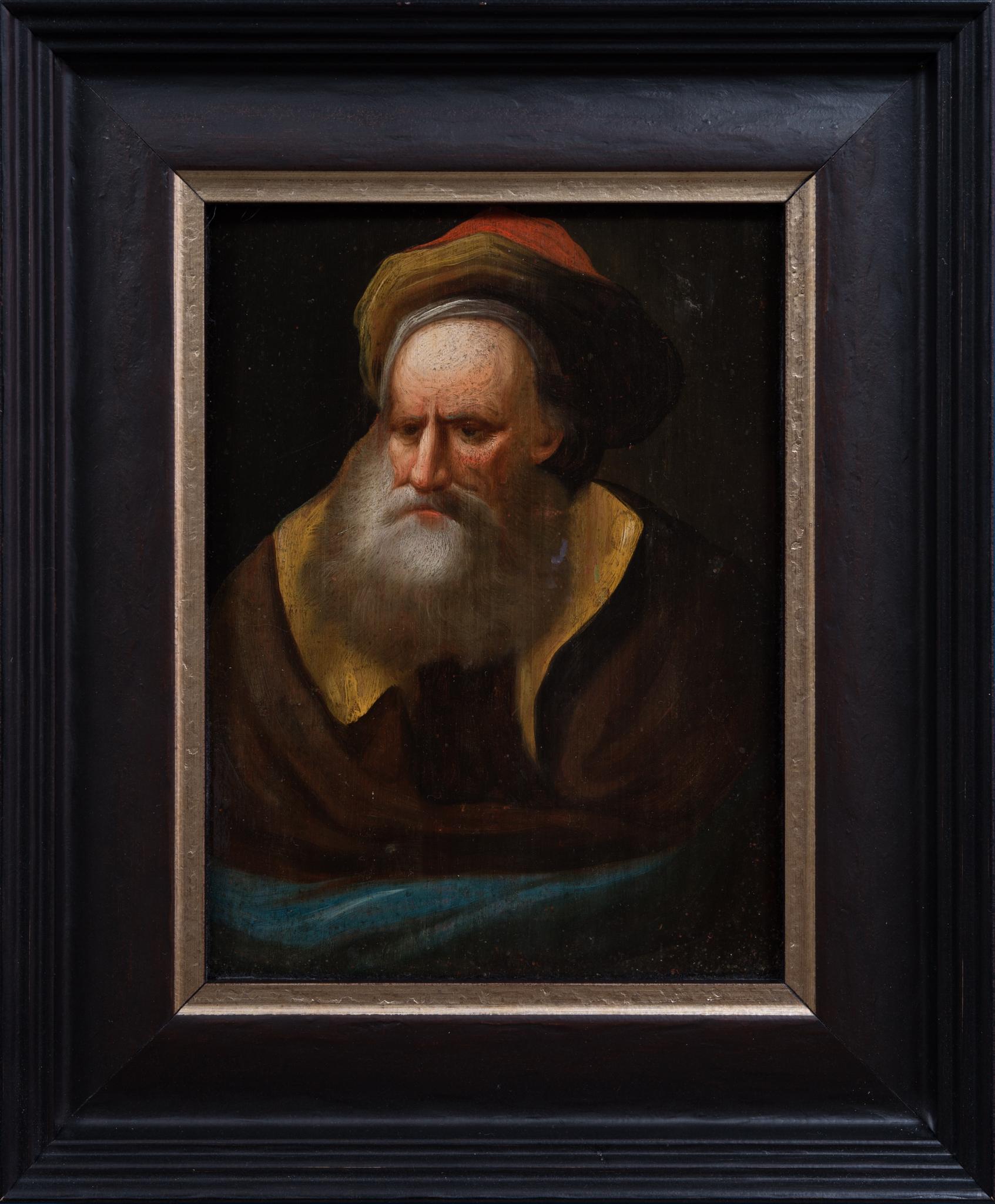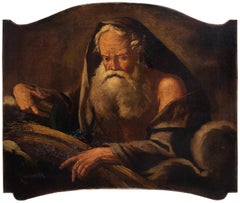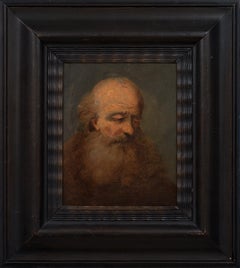Items Similar to Euklid Philosopher, Portrait of a Man, Old Master Painting, Baroque Art
Want more images or videos?
Request additional images or videos from the seller
1 of 18
Euklid Philosopher, Portrait of a Man, Old Master Painting, Baroque Artc. 1660
c. 1660
$9,453.95
£7,022.71
€7,900
CA$13,042.39
A$14,337.17
CHF 7,534.96
MX$174,105.49
NOK 93,996.74
SEK 89,055.30
DKK 60,138.89
About the Item
Impressive Painting of the philosophy Euclid, painted in the Manner of Luca Giordano.
Provenance: Amsterdam, Sotheby's, 21.11.1995, Lot 46
- Creation Year:c. 1660
- Dimensions:Height: 50.79 in (129 cm)Width: 40.16 in (102 cm)
- Medium:
- Movement & Style:
- Circle Of:Circle of Luca Giordano (Naples, 1634 - 1705) (1634 - 1705, Italian)
- Period:
- Condition:
- Gallery Location:Greven, DE
- Reference Number:1stDibs: LU1550214658522
About the Seller
4.8
Platinum Seller
Premium sellers with a 4.7+ rating and 24-hour response times
Established in 2011
1stDibs seller since 2021
30 sales on 1stDibs
Typical response time: 1 hour
- ShippingRetrieving quote...Shipping from: Greven, Germany
- Return Policy
Authenticity Guarantee
In the unlikely event there’s an issue with an item’s authenticity, contact us within 1 year for a full refund. DetailsMoney-Back Guarantee
If your item is not as described, is damaged in transit, or does not arrive, contact us within 7 days for a full refund. Details24-Hour Cancellation
You have a 24-hour grace period in which to reconsider your purchase, with no questions asked.Vetted Professional Sellers
Our world-class sellers must adhere to strict standards for service and quality, maintaining the integrity of our listings.Price-Match Guarantee
If you find that a seller listed the same item for a lower price elsewhere, we’ll match it.Trusted Global Delivery
Our best-in-class carrier network provides specialized shipping options worldwide, including custom delivery.More From This Seller
View AllFenzoni, Painting AND preparatorial Drawing, John the Baptist, Italy Renaissance
By Ferrau Fenzoni
Located in Greven, DE
The painting and the preparatory drawing are offered together.
Provenance
Private collection, Germany, Trier, c. 1980- 2013
Saint John the Baptist
Brown ink and wash over red chalk on oatmeal paper
31 x 20.5 cm
Inscribed: „Ferrau Fenzonio da Faenza invt. esque … imp. da Fran. Villamena …“.
bears the collector's mark of Henry Scipio Reitlinger (1882-1950; Lugt 2274a) on a tiny label glued to the verso
On the reverse is a partial drawing of a Pieta, pricked for transfer.
Provenance
New York, Doyle, 14. October 2015, No. 6
The painting and the preparatory drawing resemble the composition of an engraving after Ferraù Fenzoni by Francesco Villamena. Drawing, engraving and painting are almost identical, except for minor differences. Even the measurements nearly correspond: painting (32 x 25,5 cm), drawing (30 x 20,5 cm), engraving (31,1 x 23,5 cm).
Dr. Guiseppe Scavizzi confirmed the attribution of the present panting to Fenzoni and he dates it to c. 1590.
The inscription on the drawing reads “Ferrau Fenzonio da Faenza invt. esque. . . imp. da Fran: Villamena . . .”. The engraving’s inscription also lists place and date “Ferra Fensionius inventor/F. Villamoena sculpsit Rome/Aspectu fruitur… antra puer/cum Privilegio… 1613”.
Interestingly, the engraving is not mirrored as it is in most printing processes. Painting, drawing and engraving are not reversed but the same. It is remarkable to note that there are further paintings by Fenzoni which were engraved in the same order and not reverted. They also show strong parallels regarding the compositions and the measurements (see for example “Deposition of Christ” ).
Ferraù Fenzoni was an Italian painter mainly active in Todi. He is also called Il Faenzone after his birthplace (Faenza). He apprenticed in Rome during the papacy of Gregory XIII and contributed to numerous fresco cycles under pope Sixtus V, such as the Loggia della Benedizioni in the Lateran Palace, the frescoes on the walls and vaults of the Scala Santa of the adjacent Basilica of San Giovanni in Laterano, and the decoration in the Sistine library. His expressive canvases straddle the styles of Mannerism and Baroque. In 1594, he moved to Todi. A “Last Judgement” by him is housed in the cathedral of Todi. He returned to Faenza in 1599, where he decorated chapels in the cathedral from 1612 to 1616. In 1622, he completed a “Deposition”, now in the local Pinacoteca. In 1640, Fenzoni was named “cavaliere dello speron d’oro” by Cardinal Colonna and, on 25th April 1634, he was nominated vicar and “castellano of Granarolo”.
Fenzoni‘s style is characterized by a mixture of the Mannerism of the Northern Netherlands and the Italian Baroque.
Saint John the Baptist, Old Master, 17th Century, By Fenzoni, Religious Scene, Rome Art...
Category
16th Century Mannerist Figurative Paintings
Materials
Canvas, Oil, Handmade Paper
Ferrau FenzoniFenzoni, Painting AND preparatorial Drawing, John the Baptist, Italy Renaissance, 1590
$28,720 Sale Price
25% Off
Hercules and Omphale, Old Master Painting, Mannerism, Baroque, Mythology, Prague
Located in Greven, DE
Hercules and Omphale
Oil on panel, 52 x 41 cm
According to legend, Hercules had to make atonement and became a slave to the Lydian queen Omphale. When she found out who her slave was, she married him. Falling for his mistress and made effeminate by the luxury of court life, the former hero allowed himself to become the laughing stock of the court. He dressed in women's clothes, spun wool and did other women's work, whereas Omphale wore his lion's skin and carried a wooden club. When the time of punishment was over, the hero realised his delusion and left Omphale.
So far, the painting could not be clearly assigned to an artist. Nevertheless, it impresses with its fluid and convincing painting, whose colourfulness and conception are reminiscent of the Prague School around Bartholomäus Spranger.
This work follows an engraving and an etching made by Michel Dorigny in 1643 after a design by Simon Vouet. It shows the same scene but the print differs in minor details from the present painting (see e.g. the head of the lion) and the treatment of the faces seems to be painted more detailed and refined.
So far there is no painting...
Category
17th Century Baroque Figurative Paintings
Materials
Oil, Panel
Study of a Man, Old Master Drawing, Figure, Roman Study, Lombard
Located in Greven, DE
Old Master Drawing by the Circle of Lambert Lombard. Drawing/ Study of a Man in Renaissance Style, later signed "F. Floris".
Study of a Man
Lombard li...
Category
16th Century Renaissance Figurative Drawings and Watercolors
Materials
Handmade Paper
$2,872 Sale Price
20% Off
Old Master Painting, Flemish Baroque, Religious Scene, Esau and Jacob, Lentil
By Erasmus Quellinus the Younger
Located in Greven, DE
Isaac and Rebecca had two sons: the twins Esau and Jacob. Esau was the first-born, giving him the birthright. Among Jews the birthright gave the eldest son authority over the family,...
Category
17th Century Baroque Figurative Paintings
Materials
Oil, Panel
Sacra Conversazione, Maria, Christ, Old Master, Religious, Baroque Painting, art
Located in Greven, DE
Attributed to Peter Candid / Pieter de Witte
(Bruges c. 1540 - 1628 Munich)
Sacra Conversazione
Oil on wood, 29 x 37 cm
The painter, sculptor and architect Peter Candid, known in Italy as Pietro Candido, was born in Bruges between 1540 and 1548. In the 1560s he stayed in Florence, where he worked in the workshop of Giorgio Vasari, with whom he collaborated on a number of commissions for the House of Medici. After a brief stay in Volterra, he went to Munich in 1586. For the next 42 years, until his death, he remained court painter to Duke William V...
Category
17th Century Renaissance Figurative Paintings
Materials
Oil, Panel
Portrait of a Boy, John Closterman, Large English Portrait Art, Old Master
By John Closterman
Located in Greven, DE
John Clostermann
(Osnabrück 1660 - 1711 London)
Portrait of a boy, maybe Charles Hinde
Oil on canvas, 61 x 74,6 cm
John Closterman (also Klosterman) was a portrait painter of the late 17th and early 18th centuries. He primarily portrayed English noblemen and European aristocratic families. His father was already an artist and he trained his son. In 1679 he went to Paris and studied with Francois de Troy. In 1681 he was in London and worked for the artist John Riley, whose studio he took over after his death. In 1696 he was invited to the Spanish court...
Category
17th Century Baroque Figurative Paintings
Materials
Canvas, Oil
You May Also Like
Antique Italian painter - 18th century figure painting
Located in Varmo, IT
Italian painter (18th century) - Chrono.
90.5 x 106 cm.
Antique oil painting on canvas, without frame (not signed).
Condition report: Lined canvas. Good state of conservation of t...
Category
Early 18th Century Old Masters Figurative Paintings
Materials
Canvas, Oil
$4,786 Sale Price
20% Off
PHILOSOPHER - Neapolitan School - Italian- Figurative Oil on canvas painting
By Ciro De Rosa
Located in Napoli, IT
Philosopher - Ciro De Rosa Italia 2008 - Oil on canvas cm. 60x50
Gold leaf gilded wooden frame available on request
The painting by the painter Ciro De Rosa portrays an old and wise ...
Category
Early 2000s Baroque Portrait Paintings
Materials
Canvas, Oil
Nicolaes Maes workshop (Baroque Dutch)- 17th century figure painting - Portrait
Located in Varmo, IT
Nicolaes Maes (Dordrecht 1634 - Amsterdam 1693) circle of - Portrait of a Gentleman.
81 x 65 cm unframed, 100.5 x 83.5 cm with frame.
Antique oil painting on canvas, in a carved an...
Category
17th Century Old Masters Figurative Paintings
Materials
Oil, Canvas
$7,180 Sale Price
25% Off
Portrait of an Elderly Man
Located in Stockholm, SE
This finely executed oil painting, attributed to the circle of Christian Wilhelm Ernst Dietrich, captures the contemplative expression of an elderly man, his gaze lowered in quiet re...
Category
Early 19th Century Old Masters Portrait Paintings
Materials
Oil, Wood Panel
Portrait Philosopher Democritus Beinaschi Paint 17th Century Oil on canvas
Located in Riva del Garda, IT
Giovanni Battista Beinaschi (Fossano, c. 1634 – Naples, 1688)
Portrait of the philosopher Democritus (showing a book with a white cover)
Oil on canvas (82 x 64 cm - Framed 95 x ...
Category
17th Century Old Masters Paintings
Materials
Oil
Portrait of an Old Bearded Man
Located in Stockholm, SE
We are pleased to offer a captivating portrait, most likely painted in the late 18th century, attributed to an artist within the circle of Christian Wilhelm Ernst Dietrich. This oil ...
Category
Late 18th Century Old Masters Portrait Paintings
Materials
Oil, Wood Panel
More Ways To Browse
Antique Portrait Painting Of Man
Old Man Painting
Lucas Oil Painting
Naples Oil Painting
Portrait Canvas Oil Antique Man
Painting Of Naples
Old Man Oil Painting
17th Century Man Portrait
Luca Giordano
Olaosun Oluwapelumi
Paris Sketch
Pas De Calais
Reclining Woman Oil Painting
Red Head Painting
Refugee Art
Tossa De Mar
Aba Linus
Anastasia Aureum

